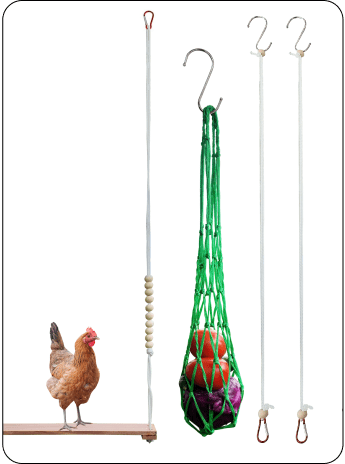
Introduction
Selling on Amazon can be an exciting adventure, but getting your products to customers quickly and cost-effectively is a whole other challenge. An efficient logistics strategy can save you money, delight your customers, and boost your seller ratings. This blog is your detailed guide to optimizing your shipping methods, ensuring your packages are delivered with the utmost care and attention to your customers.
Choose the right fulfilment method
Selecting the appropriate fulfillment method is a cornerstone of success on the Amazon marketplace as it directly impacts your shipping efficiency, costs, and customer experience. Amazon offers three primary fulfillment options: Fulfillment by Amazon (FBA), Fulfillment by Merchant (FBM), and Seller Fulfilled Prime (SFP). Here’s how you can determine which one is the best fit for your business:
Fulfillment by Amazon (FBA):
FBA is Amazon’s most popular fulfillment program. Amazon handles all aspects of fulfillment, including inventory storage, order picking and packing, shipping, and customer service. This frees up significant time and resources for sellers to focus on other aspects of their business, such as marketing and product development. FBA also makes sellers eligible for Prime benefits, which can significantly boost sales.
Who is FBA ideal for?
- High-volume sellers: FBA is highly efficient for handling large order volumes.
- Sellers prioritizing Prime eligibility: FBA is the primary pathway to offer Prime shipping benefits to customers.
- Sellers seeking to minimize operational overhead: FBA significantly reduces operational burden by handling inventory storage, order fulfillment, and customer service.
- Sellers selling products that are suitable for long-term storage: FBA provides ample storage space in its fulfillment centers.
Fulfillment by Merchant (FBM)
With FBM, you handle the storage, packaging, and shipping yourself or through a third-party logistics (3PL) partner. It provides sellers with complete control over their entire fulfillment process, including inventory management, order processing, and shipping. This can be the most cost-effective option for some sellers, especially those with low-volume or high-value items.
When to choose FBM?
- If you have a small number of orders, managing fulfillment in-house might be more cost-effective than the fees associated with FBA.
- If you sell products with unique handling requirements and need more control over how your products are handled during fulfillment.
- For heavy or oversized products, FBM can offer a more competitive cost structure compared to FBA.
Seller Fulfilled Prime (SFP)
SFP allows sellers to offer Prime shipping while managing their own fulfillment. This can be more cost-effective than FBA for certain products and provides more control over the shipping process.
While Seller Fulfilled Prime (SFP) offers the advantage of offering Prime shipping and maintaining control over your fulfillment operations, it comes with significant considerations.
Firstly, meeting strict performance targets for on-time delivery, order defect rates, and other key metrics is crucial to maintain SFP eligibility.
Secondly, you may need to invest in or upgrade your existing technology and infrastructure to support SFP operations. This could include implementing robust order management systems, integrating with shipping software, and potentially optimizing your fulfillment center for efficiency.
However, if you already possess an efficient fulfillment operation with proven track record in order processing, packing, and shipping, SFP can be a viable option to explore.
Inventory Management
Effective inventory management is crucial for maintaining smooth operations as an Amazon seller. Mismanaged inventory can lead to stockouts, overstocking, and increased storage fees—all of which impact your profitability and customer satisfaction. Here’s how you can optimize your inventory management:
Demand forecasting: Use data-driven tools or reports to predict demand for your products. Consider factors like seasonality, historical sales data, and market trends to ensure you maintain optimal stock levels. For instance, plan for increased inventory during peak shopping seasons, such as holidays or Prime Day.
Inventory tracking: Regularly monitor your inventory levels through Amazon’s Seller Central or third-party inventory management tools. This ensures you’re always aware of low stock levels and can reorder on time, avoiding lost sales due to stockouts.
Reduce Excess Inventory: Overstocking can lead to higher storage fees, especially if you’re using FBA. Identify slow-moving products and consider strategies like discounts, promotions, or Amazon’s FBA Liquidations program to free up storage space and reduce costs.
Inventory Auditing: Conduct regular audits to ensure your stock levels match the data in Amazon’s system. Discrepancies can lead to shipping delays, lost sales, or even suspension of your seller account.
Stay compliant with Amazon shipping policies
Amazon has strict shipping policies designed to maintain a high standard of customer experience. Non-compliance can result in penalties, account suspension, or a negative impact on your seller performance metrics. Here’s how to stay compliant:
Follow packaging guidelines:
Ensure your products are packaged securely and meet Amazon’s guidelines for size, labeling, and materials. This is especially important if you’re using FBA, as improperly packaged items can be rejected by Amazon’s fulfillment centers.
Adhere to shipping deadlines:
For FBM or SFP sellers, meeting promised delivery times is critical. Use reliable carriers and track shipments to ensure on-time delivery. Late shipments can negatively affect your account’s performance metrics.
Use approved shipping carriers:
If you’re fulfilling orders yourself, use Amazon’s approved carriers for shipments. This helps with seamless tracking updates and ensures compliance with Amazon’s requirements.
Provide accurate shipping information:
Ensure your product listings include accurate shipping details, such as delivery timeframes, shipping charges, and return policies. Inaccurate information can lead to customer complaints and account issues.
Understand FBA requirements:
If you’re using FBA, familiarize yourself with Amazon’s requirements for inbound shipments, including prep, labeling, and shipping plans. Non-compliance can lead to delays or extra fees.
Stay updated on policy changes:
Amazon frequently updates its policies, so regularly check the “News” section in Seller Central or subscribe to updates to stay informed. Compliance with the latest rules helps you avoid unexpected issues
Packaging and labeling
High-quality packaging is often overlooked, but it plays a crucial role in ensuring product safety and building customer trust. Investing in premium packaging can work wonders for your business by protecting your products during transit, enhancing the customer’s unboxing experience, and reinforcing their confidence in your brand. Some useful tips and common mistakes you can avoid are:
- To ensure your products are delivered safely, use sturdy materials that can withstand rough handling during transit. Packaging materials should protect items from shocks, compression, and environmental factors. You can use materials like corrugated boxes, protective padding, air pillows to prevent your products from getting damaged during shipping.
- If you’re using FBA, products must have an FNSKU (Fulfillment Network Stock Keeping Unit) label that is unique to Amazon. You can use Amazon’s Seller Central to generate and print FNSKU labels for your products.
- If you sell multi-packs or product bundles, Amazon requires clear labeling to indicate the quantity or that the items are sold as a set. Label with “Sold as Set” or “Do Not Separate” to avoid items being mistakenly separated in fulfillment centers.
- Adopting sustainable packaging practices can appeal to environmentally-conscious customers and align with Amazon’s eco-friendly initiatives. You can contribute to this initiative by using recyclable or biodegradable materials like paper-based padding instead of plastic.
- Use high-quality, printable labels with clear and legible addresses. Apply shipping labels securely to a clean, flat surface on the package, ensuring they are not obstructed by other labels or packaging materials. Always double-check that the correct labels are applied to each product or shipment as incorrect label placement can lead to scanning errors or delays.
Use technology to work more efficiently
Integrating technology into your shipping operations can greatly enhance efficiency, reduce costs, and elevate the overall customer experience. By automating key processes and using smart tools, sellers can streamline logistics while ensuring customers enjoy fast, transparent, and reliable deliveries. Here’s how:
For sellers:
Order Management Systems (OMS)
Order Management Systems (OMS) are the backbone of modern e-commerce operations. They go beyond basic order processing by automating tasks like order acknowledgment, inventory updates, and shipping label generation. This not only saves time and reduces manual effort but also minimizes the risk of human error. Furthermore, OMS provide valuable insights into sales trends, order volumes, and shipping performance. This data can be analyzed to identify peak seasons, predict future demand, and optimize inventory levels, ultimately leading to more informed business decisions.
Warehouse Management Systems (WMS)
Warehouse Management Systems (WMS) optimize warehouse operations by providing real-time visibility into inventory levels and guiding warehouse staff to the correct locations to pick items quickly and accurately. This minimizes picking errors and improves order fulfillment speed. Moreover, WMS can optimize warehouse space utilization, minimize travel distances for pickers, and even integrate with robotics for automated picking and packing, further enhancing efficiency and reducing labor costs.
Predictive Analytics
By leveraging AI and machine learning algorithms, predictive analytics can analyze historical sales data, market trends, and other relevant factors to forecast future demand. This enables sellers to proactively adjust inventory levels, avoid stockouts during peak seasons, and minimize the risk of excess inventory.
For Customers:
Real-time tracking & delivery notifications
Providing customers with real-time tracking updates throughout the entire shipping journey enhances transparency and builds trust. This can be achieved through online portals, mobile apps, SMS notifications, and email updates. Offering estimated delivery windows and real-time tracking with map views further improves the customer experience.
Flexible delivery options
Offering a variety of delivery options, such as same-day, next-day, evening delivery, and delivery to alternative locations (workplace, neighbor’s address), empowers customers to choose the most convenient option for their needs. Options like appointment-based delivery or delivery lockers further enhance customer convenience and flexibility.
Self-Service returns portal
Enabling customers to easily initiate returns through a user-friendly online portal streamlines the returns process. Providing clear instructions, pre-paid return labels, and real-time tracking for return shipments enhances the customer experience and reduces the burden on customer support.
Proactive customer support
Utilizing chatbots and AI-powered customer support tools can address common shipping inquiries and provide instant resolutions. This frees up customer service representatives to handle more complex issues and improves overall customer satisfaction.









